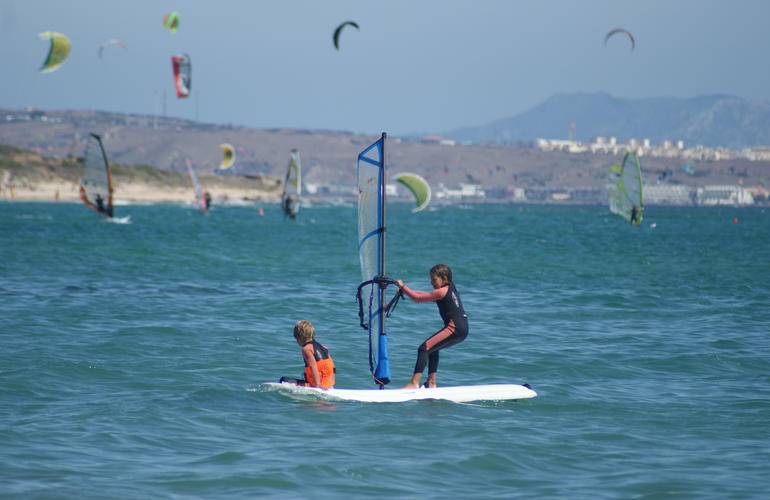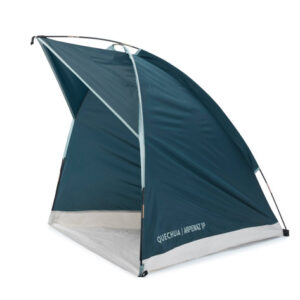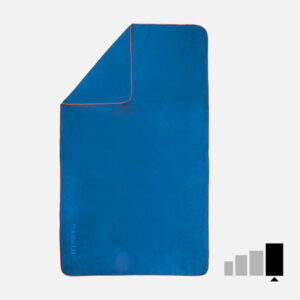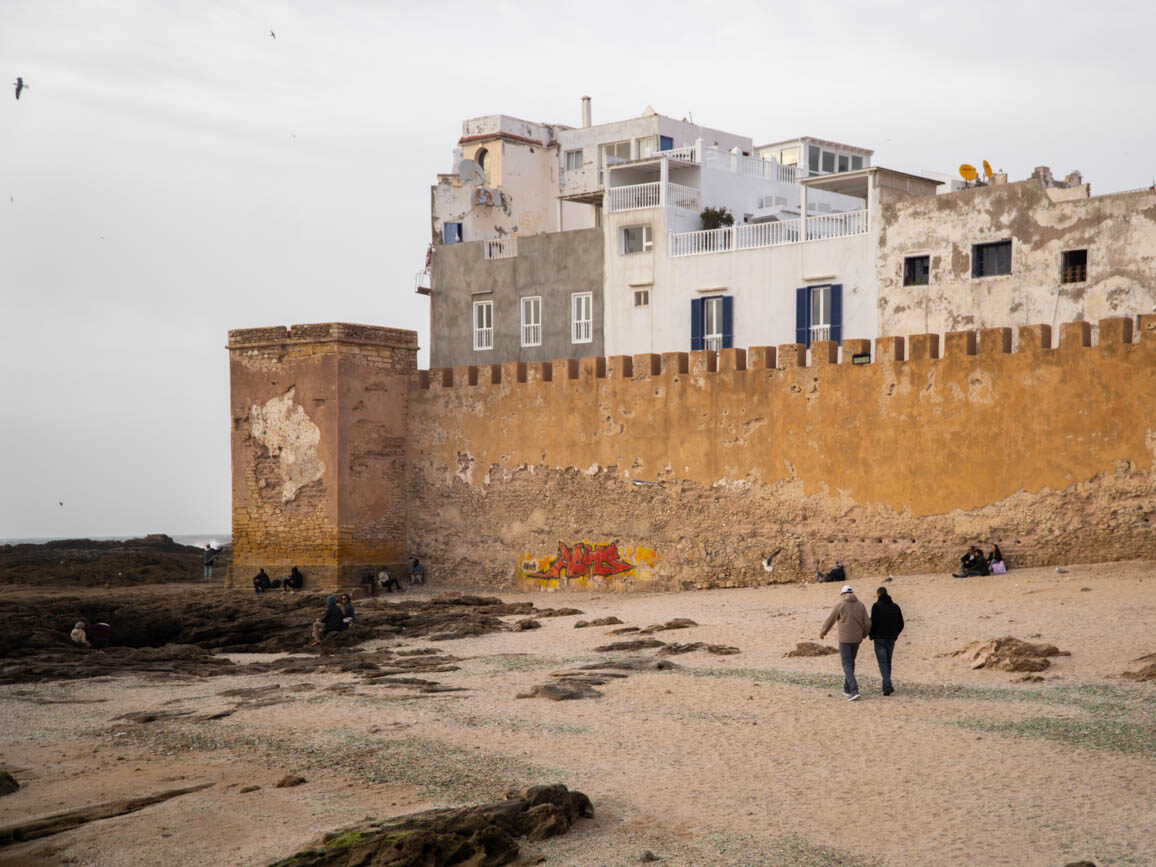
What to do in the Cádiz province (Costa de la Luz): Barbate, Tarifa, Trafalgar & Vejer
Located in the southernmost tip of Spain, in the region of Andalusia, the Cádiz province holds many treasures, from unspoilt beaches along the Costa de la Luz, to charming whitewashed villages with a Moorish twist such as Barbate, Tarifa or Vejer de la Frontera. Ready to discover what to see and do in the Cádiz province, where to eat the delicious local gastronomy and where to stay? Keep on reading for more details!
***
Disclaimers:
- I visited the Cádiz province back in July 2018. This post includes the latest information available to this date, and I’ll keep updating it as I discover more destinations in the area.
- Please note that this post includes some affiliate links. This means that, at no additional cost for you, I earn a commission if you make a purchase. In case you have any question about the companies advertised here or my status as an affiliate, please do not hesitate to contact me.
***
When visiting this area of the Cádiz province, feel free to use this Andalucía guide by Lonely Planet or this Cádiz and Gibraltar travel guide by Anaya Touring to plan your stay and make the most out of it. I hope you’ll find them helpful!
In this post, I’ll be covering the following villages that we visited during our tour throughout the Cádiz province:
- Barbate
- Tarifa
- Vejer de la Frontera
- Zahara de los Atunes (it actually belongs to Barbate, but I decided to list it separately given its importance)
Except for the whitewashed village of Vejer that lies inland, the remaining ones are located by the Costa de la Luz (literally meaning the coast of light), a coastal stretch of 200 km facing the Atlantic Ocean spanning from Tarifa all the way to the Huelva province next to Portugal. Compared to the Costa del Sol, the Costa de la Luz is more popular among Spaniards (especially locals from Sevilla who vacation here to escape the scorching summer heat). However, foreign tourism is slowly but surely picking up too.
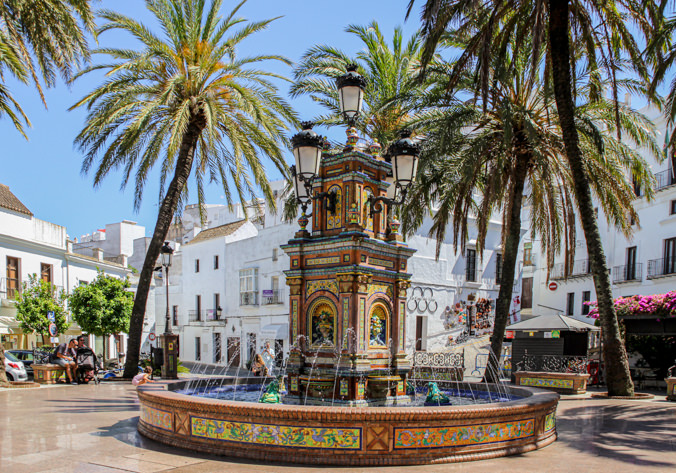
In case you’re wondering how much time you should devote to exploring the Cádiz province, I would suggest that one day for each of the abovementioned villages would suffice. However, you could easily spend a whole week if you’re aiming for a more relaxed approach (and I kind of like that idea 🙂 ).
At the end of this post, I’ve included a map so you can easily pinpoint all the spots mentioned throughout this article. Feel free to save it for later reference when planning your own trip!
And now, let’s dive right in!
📸 What to see and do in the province of Cádiz
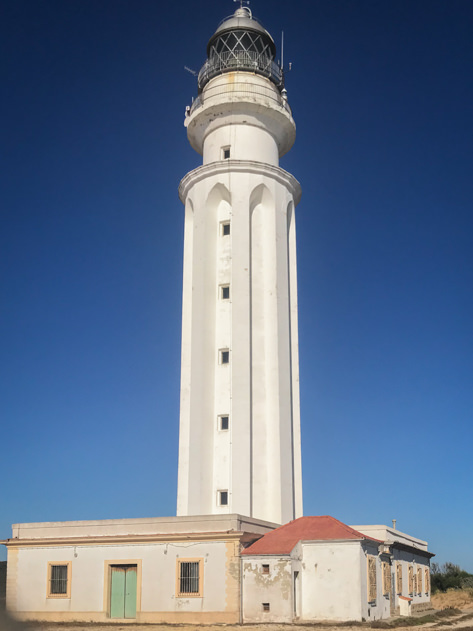
🐟 Barbate
Closely connected to the sea, the coastal village of Barbate lies by the Costa de la Luz and has been a major port enclave for thousands of years. First occupied by the Carthaginians, Barbate was then home to the Romans, the Moors and finally the Christians led by king Alfonso X.
Its importance originates not only given its strategic location near Africa, but also from the abundance of fish such as tuna crossing the Strait of Gibraltar towards the Mediterranean Sea. As a matter of fact, this is one of the best areas to discover the almadraba fishing technique, an ancient way of capturing red tuna with traditional nets. In case you’d like to experience bluefin tuna fishing first-hand, you can book a boat tour between the months of April and June.
Here’s what to do in Barbate (Cádiz):
- Explore the old town of Barbate. You can start your visit in Plaza de la Inmaculada, a central garden square surrounded by the City Hall (Ayuntamiento), a church (parroquia de San Paulino), and a monument dedicated to a fisherman. Heading towards the river (río Barbate), you will run into the old seafood market (Lonja Vieja). A few steps away you will find the boardwalk (Paseo Marítimo), which you can follow along the beach of Playa del Carmen until you reach the colorful fishing port (puerto pesquero), the marina (Puerto Deportivo de la Albufera) and the modern harbor market (lonja). The latter is actually one of the most active in Andalusia!
- Museo del Atún: this tuna museum founded by the local company La Chanca walks visitors through the ancient ‘almadraba‘ tradition of capturing red tuna. It’s a helpful experience in order to better understand tuna fishing! Trying bluefin tuna is another must when visiting Barbate. For more details, head to the next section down below on where to eat in the province of Cádiz.
- Hit the golden sandy beaches: given its popularity as a summer destination, there are a variety of beaches you can choose from in Barbate. In addition to the abovementioned Playa del Carmen, which lies at the heart of the village, you may also sunbathe at Playa de la Hierbabuena, Playa del Castillejo, Playa de los Caños de Meca or Playa de Zahora. All these beaches are located between Barbate and nearby Conil de la Frontera.
- Enjoy nature and panoramic views at Parque Natural de la Breña y Marismas del Barbate: this natural park is the perfect break in case you’re beach hopping or if you enjoy hiking. The park offers a stark contrast between the Barbate marshes and the imposing cliffs facing the Atlantic Ocean (some of them reach 100 meters high, so beware!). In the park, you will find endless pine trees, migratory birds and watchtowers that were built in the 16th century in order to protect the Spanish coast from pirates. The best example of these towers is Mirador Torre del Tajo, a great panoramic viewpoint to admire the beautiful coast of Cádiz. Further inland lies a Visigothic hermitage (Ermita de San Ambrosio), although it’s unfortunately in pretty bad shape.
- Explore the historic site of the Battle of Trafalgar. In 1805, Cape Trafalgar (Cabo de Trafalgar) became the scene of an epic battle between the navies of the United Kingdom led by Admiral Nelson against the combined fleets of France and Spain. As you might already know, it was a tragic loss for the latter. Nowadays, you can see a lighthouse around that location (faro de Trafalgar). Built in 1860, it features breathtaking ocean views.
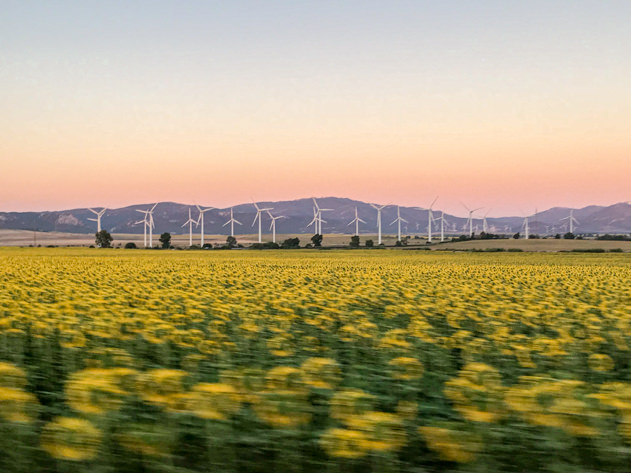
🏄 Tarifa
Welcome to the windy paradise, also known as Tarifa! Located in the southernmost tip of Spain (and also of Europe), right in front of the coast of Morocco through the Strait of Gibraltar, this charming town is mainly known for its stunning, wild beaches that attract flocks of surfers, windsurfers and kitesurfers from around the world.
Feeling adventurous? Check out these Manawa activities in Tarifa!
Discover Scuba Diving in Tarifa
Group Windsurfing lessons in Tarifa, near Gibraltar
Open Water scuba diving Course in Tarifa, Cadiz
Private Kitesurfing lessons for beginners in Tarifa
Thanks to its unique blend of Moorish and Andalusian influences, Tarifa offers a rich history that creates a captivating atmosphere for visitors.
Wondering where to start when visiting this municipality in Costa de la Luz? Here’s what to see and do in Tarifa (Spain):
- Visit the ruins of the Roman town of Baelo Claudia: honestly, I couldn’t think of a better spot to build a city! Located right in front of the Bolonia beach, an area that now belongs to Tarifa, the Romans founded Baelo Claudia in 171 BC. The archaeological site features a visitor center and a museum housing permanent as well as temporary exhibitions. It also hosts plenty of remains, including the forum, various temples, baths, a theater and even a salting factory, where Romans processed their famous garum (a fermented fish sauce that was extremely popular in that period).
- Explore Tarifa’s Old Town: you can start your itinerary at the historic gate known as Puerta de Jerez. From there, walk around the city walls and check out the market (Mercado Público de Tarifa) and some religious monuments. Those include a couple of churches built in the 16th century (iglesia de San Mateo, iglesia de San Francisco de Asís), and a sanctuary (Santuario de Nuestra Señora de la Luz) further inland. Continue wandering around the narrow, whitewashed streets until you reach the Castle of Tarifa (Castillo de Guzmán el Bueno or Castillo de los Guzmanes). This defensive fortress was built in 960 and overlooks the sea. After king Sancho IV El Bravo took over Tarifa from the Moors in 1292, the city was sieged. Legend has it that Alonso Pérez de Guzmán, who would be later known as Guzmán el Bueno and would become the first duke of Medina Sidonia, threw a knife so that the enemies could cut his son’s throat instead of handing them over Tarifa. Next to the castle, you will find the colorful fishing port and the ferry terminal. From there, you will notice another castle (Castillo de Santa Catalina) on a hilltop. You may finish off your tour around Tarifa by heading to Isla de las Palomas (also known as Isla de Tarifa), although you need to book your visit beforehand.
- Check out the windy beaches and practice any nautical sport: over the years, Tarifa has become a popular spot for tourism thanks to its pleasant weather and chilled vibe. In addition to that, the powerful easterly and west winds (vientos de levante y poniente) have positioned Tarifa as the global capital of windsurf, attracting lovers from similar sports such as surf, kitesurf or wingfoil. The most popular beaches in Tarifa include Playa de Bolonia (and its famous dune at 30 meters high surrounded by pine trees – Duna de Bolonia), Playa Chica, Playa de los Lances (the surfers’ favorite) or Playa de Valdevaqueros (full of windsurfers). Furthermore, the strong winds make Tarifa the ideal location for wind turbines, and you’ll see them pretty much everywhere along the major roads.
- Take a ferry to Morocco: given its strategic location off the Strait of Gibraltar, Tarifa is the perfect departure point to explore our southern neighbor. You can easily hop on a ferry from the port of Tarifa and head to the Moroccan city of Tangier!

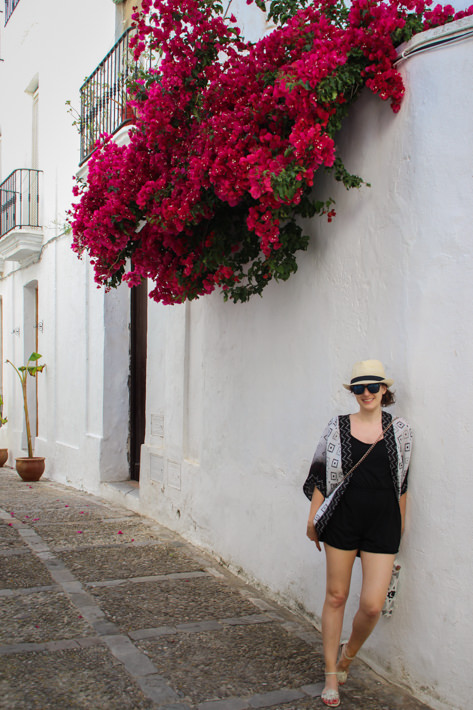
🤍 Vejer de la Frontera
In this post exploring the Cádiz province, Vejer de la Frontera, also simply referred to as Vejer, is the only village that lies inland and not by the coast. That being said, this fact doesn’t prevent locals from having their own beach area. And what a beach: Playa El Palmar is 11 kilometers long, so there’s basically room for everyone!
Majestically located on top of a hill, the whitewashed, steep streets and Moorish architecture of Vejer de la Frontera will make you travel back in time. Together with the surfer-cool town of Tarifa, Vejer was definitely my favorite destination of this trip!
Read below to learn more about the top things to see and do in Vejer de la Frontera:
- Wander around the Old Town of Vejer: sometimes, getting lost when exploring a new place is the best thing you can do. And that is definitely the case here in Vejer de la Frontera. Get ready for narrow alleys enclosed within the old city walls, whitewashed houses, and charming patios dotted with colorful flowerpots. In case you need some directions, you may access this historic town through any of these four gates (Puerta de la Segur, Puerta de Sancho IV, Arco de la Villa, Arco de Puerta Cerrada). The imposing Arab castle (Castillo de Vejer) dominates the landscape. Around it, you will find various religious monuments such as iglesia del Divino Salvador, iglesia del Convento de la Concepción (next to which you will find one of the most Instagrammable spots known as Arco de las Monjas), Convento de San Francisco (turned into a hotel), and iglesia de la Merced (built in the 17th century by the dukes of Medina Sidonia). The picturesque Plaza de España, the former Jewish quarter of La Judería, or the elegant buildings of Palacio del Marqués de Tamarón, Casa del Mayorazgo and its adjacent tower (Torre del Mayorazgo) are worth a stop too. Outside the city walls, you will find some old windmills (molinos de viento) built around 1830. If you keep driving five kilometers south of Vejer towards Barbate, you´ll run into a sanctuary (santuario de Nuestra Señora de la Oliva) hosting the town´s patron saint.
- Enjoy art outdoors: Fundación NMAC Montenmedio Contemporánea is an open air museum displaying sculptures a few kilometers away from the heart of Vejer.
- Explore prehistoric remains such as dolmens and other funerary elements at the cave of Cueva del Tajo de las Figuras, although it seems that it is currently closed.
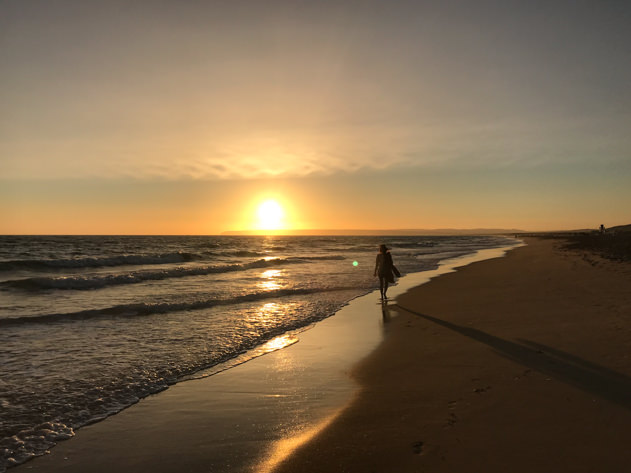
🌊 Zahara de los Atunes
Our last stop around the Cádiz province is Zahara de los Atunes, also simply known as Zahara. It is actually part of Barbate, but given its own significance, I decided to list it separately. Even its name attests to the importance of bluefin tuna fishing in the area, since ‘atunes’ means tuna in Spanish!
As opposed to the more industrious village of Barbate, you might notice that Zahara de los Atunes is more upscale and distills bohemian beach town vibes.
Wondering what to see and do in Zahara de los Atunes (Cádiz)? Here are some ideas to get you started:
- Castillo de las Almadrabas: also known as Castillo de Zahara de los Atunes, Palacio de Pilas or just El Palacio, this monument built in the 16th century by the Duke of Medina Sidonia is now mostly in ruins, with only a few defensive walls left. Back in the day, it served as a fortress, as a warehouse for the tools that were used for the almadraba tuna fishing, and as a place to salt the red tuna in order to preserve it for long periods of time. Miguel de Cervantes, the famous author of Don Quixote and native to Alcalá de Henares, is said to have been working here for a while. Nowadays, the former castle houses some bars and a craft market.
- Iglesia del Carmen: around the corner from Castillo de las Almadrabas lies this church dedicated to Virgen del Carmen, the patron saint of sailors and fishermen that is widely celebrated across Spain every year on July 16th.
- Try the famous red tuna (atún de almadraba). When visiting Zahara de los Atunes, this foodie experience is definitely a must. For more information, head to the next section on where to eat in the province of Cádiz.
- Take a dip at the beach in Costa de la Luz: some great options to sunbathe by the freezing waters of the Atlantic Ocean include Playa de Zahara, Playa de los Alemanes or Playa del Cañuelo (this secluded beach is only reachable by foot and is located under a lighthouse – Faro de Camarinal).
I don’t know about you, but when spending the day at the beach, I enjoy feeling comfortable. Below are some of the sports products that I typically use. Feel free to check out my Decathlon affiliate profile in order to browse additional items.
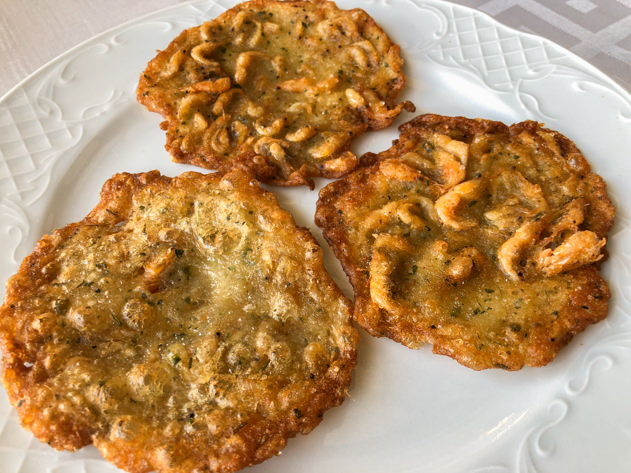
🍽 What and where to eat in the Cádiz province
The Cádiz province is a paradise for food-loving travelers, especially for those who enjoy eating freshly caught fish and seafood. The two local specialties that stand out here include almadraba red tuna (atún de almadraba; it is particularly popular in Barbate, Conil, Tarifa and Zahara), and shrimp fritters (known as tortitas de camarones, they are made with a batter of chickpea flour, water and shrimps fried in olive oil). Make sure to try both of them and let me know what you think in the comments!
I listed below the restaurants and bars that we tried during our summer vacation, sorted by destination. I also included some others that came recommended in the Cádiz and Gibraltar travel guide by Anaya Touring. Without further ado, enjoy your meal!


Tapas bars, restaurants and clubs in Barbate and Zahara de los Atunes
As I mentioned earlier, even though Zahara de los Atunes belongs to Barbate, you might spot noticeable differences between the two. Namely, the cafes, bars and restaurants in Barbate are rather simple and modest, whereas they tend to be much more classy and hence more expensive in Zahara. Keep that in mind if you’re mindful of your budget when eating out!
- Tapas bars: El Retinto, Taberna El Gamba, Nuevo Ancla (now called Nueva Estrella Polar), El Mantecoso, El Mirador, Taberna Abelardo in Barbate. In Zahara, you can try the following: La Jábega, El Corral, La Tasca de Damián Ríos, La Luna, El Pez Limón.
- Restaurants: La Taberna de Zahara (we loved dining here and we obviously ordered the locally sourced red tuna cooked in two ways: bluefin tuna tartar and grilled tuna; yum!), El Campero, Rincón Andaluz, Variopinto, Antonio, Porfirio, Casa Juanito El Costero, Gaspar, El Refugio.
- Beach bars ‘chiringuitos’ and clubs: Ixo, Habana, El Azul, La Galeria Café Bar, El Flamenco beach bar (chiringuito). These are all located by the main beach in Barbate (Playa del Carmen), along the boardwalk (Paseo Marítimo).
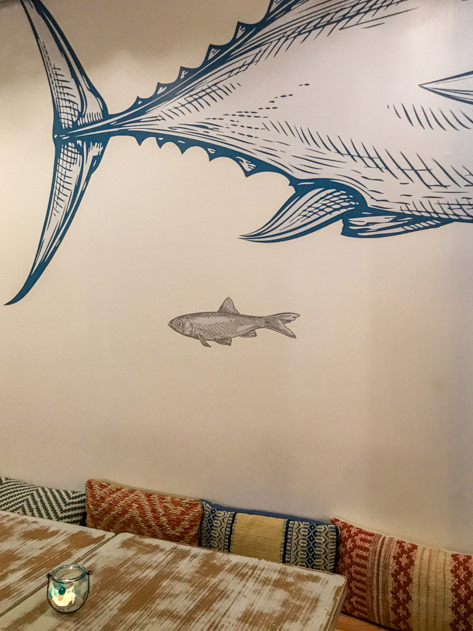
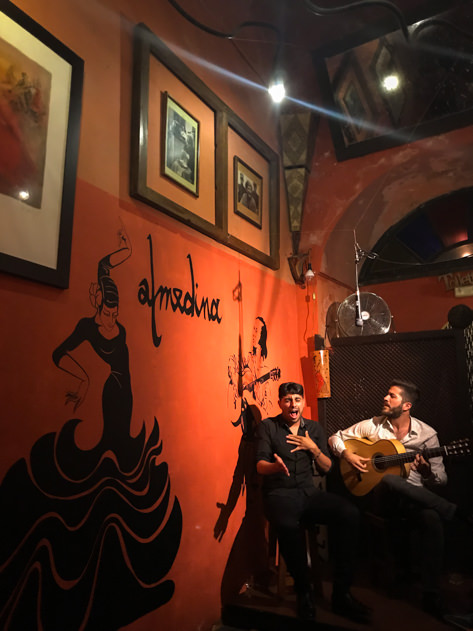
Tapas bars, restaurants and clubs in Tarifa
- Tapas bars: Taberna La Morena, El Lola, El Burgato, Ancá Curro, El Francés, Mesón Picoteo, Playa Blanca, Los Melli, El Pasillo, El Ancla, La Casona, El Caserón, Chilimosa, Mandrágora,
- Restaurants: Casa de Elena & Juan Luis, Mesón de Sancho, La Pescadería.
- Beach bars ‘chiringuitos’ and clubs: Pachamama, Café Central, Taco Way, Café del Mar, Almedina Cafe Bar (they host flamenco shows).
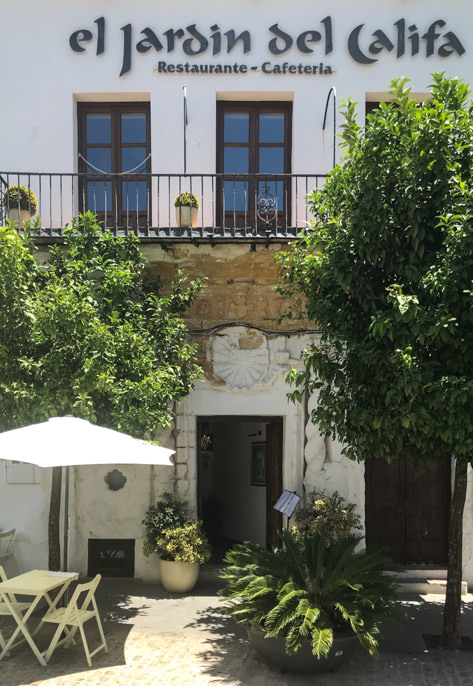
Cake shop, restaurants and clubs in Vejer de la Frontera
- Cake shop: Pastelería Galván
- Restaurants: El Jardín del Califa (delicious Moroccan food and beautiful decoration), La Castillería, Trafalgar, Las Delicias, El Pirata.
- Clubs and drinks: La Bodeguita, La Torre, El Cortijo, El Dorado.
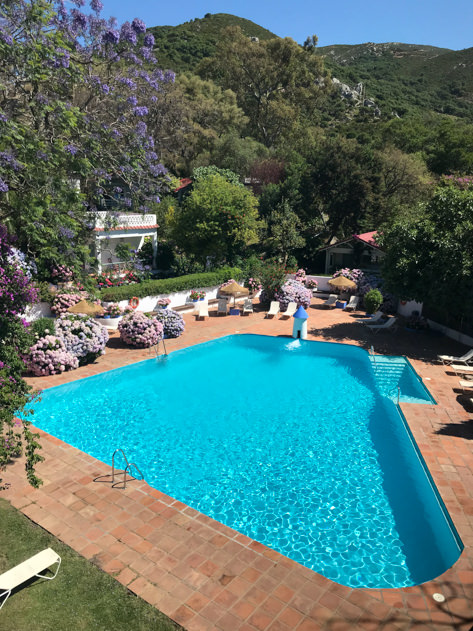
🛏 Where to stay in the province of Cádiz
Throughout our summer vacation visiting the Cádiz province, Tarifa was our base to explore the surrounding villages located in Costa de la Luz. We stayed in Mesón de Sancho and we loved it at this friendly hotel a few kilometers away from Tarifa. Our room was comfortable and spacious, and the hotel featured a dreamy swimming pool, a good restaurant and its own bull ring!
Depending on your budget and preferred destination, I’ve listed below some recommended options to stay in the province of Cádiz, from camping and bungalows, to hostels, farmhouses and hotels.
As I mentioned earlier in terms of food when comparing Barbate to Zahara de los Atunes, pretty much the same goes for those two areas when it comes to accommodation. While hotels in Barbate are rather simple and modest, you will likely find they are much more classy and expensive in Zahara. Just keep your budget in mind when browsing the options below and pick accordingly.
- Best hotels in Barbate and Zahara de los Atunes: Hotel Adiafa, Hotel El Chili, El Palomar de la Breña, Hostal Alhambra, Hacienda Sajorami, Bungalows Pura Vida, Hotel Meliá Zahara Resort & Villas, Hotel Antonio, Porfirio, El Cortijo de Zahara, Hotel Doña Lola, Hotel Pozo del Duque.
- Best hotels in Tarifa: Mesón de Sancho (this is where we stayed while we vacationed in the region), Hotel Hurricane, Hotel Dos Mares, Hotel La Codorniz, Hotel Dulce Nombre, 100% Fun Hotel, Hotel Casa Blanco, Posada Vagamundos, Posada La Sacristía, Hotel Cortijo Las Piñas, Camping Tarifa.
- Best hotels in Vejer de la Frontera: Convento de San Francisco, El Cobijo de Vejer, Hotel La Botica, Hotel La Casa del Califa (dog friendly), Apartamentos Ragel Costa (dog friendly).
📍 Map with my favorite locations in the Cádiz province
In the map below you will find all the locations mentioned throughout this post, from the main sites of interest in each village, to the recommended bars, restaurants and hotels in the area. Make sure to save it for your next trip!
🧳 Day trips from the province of Cádiz
As you can see, the province of Cádiz boasts many gems, from charming whitewashed villages to colorful fishing towns. Barbate, Tarifa, Vejer de la Frontera and Zahara de los Atunes were just a few examples. But there’s certainly much more to be discovered!
Some great additional options include the city of Cádiz, which is the capital of the province, or Jerez de la Frontera (home to elegant dancing horses and delicious sherry).
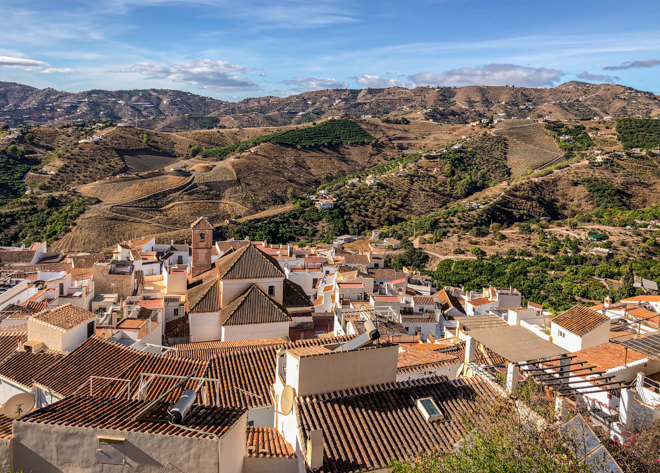
Read these posts for more inspiration around the region of Andalusia!
A guide to the Feria de Abril in Sevilla (Spain)
Celebrating New Year’s Eve in Priego de Córdoba
El Caminito del Rey: the most popular hiking trail in Málaga
El Saltillo: hiking the Gran Senda de Málaga from Canillas de Aceituno
Granada travel guide: best things to see and do in 24 hours
Review of Hotel-Museo Patria Chica in Priego de Córdoba
The majestic beauty of Córdoba
Top things to do in Málaga, the capital of Costa del Sol (+ map)
Top things to do in Sierra de Aracena (Huelva): travel guide + map
What to see in the Málaga province: 12 destinations inland & along Costa del Sol
Should you want to visit other destinations in my home country, head to the Spain page.
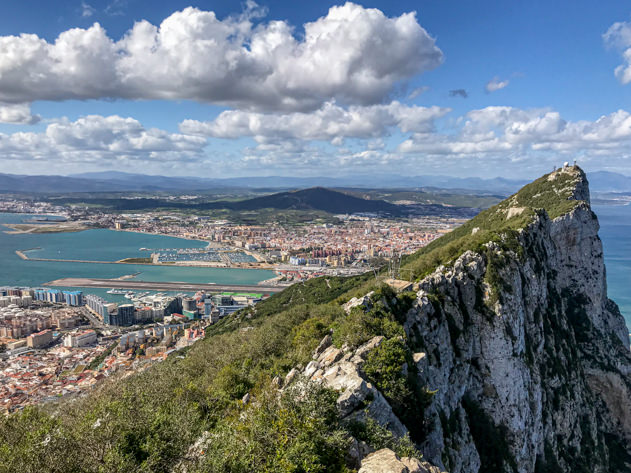
Another cool daytrip idea from the Cádiz province is to visit Gibraltar, which lies on Spanish soil but actually belongs to the United Kingdom. Feel free to read my travel guide with the top things to do in Gibraltar.
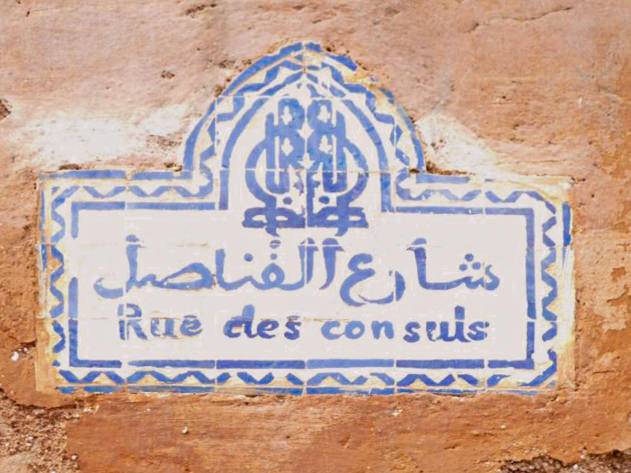
In case you have more days and you’re willing to explore the continent of Africa, you can easily hop on a ferry from Algeciras or Tarifa and you’ll make it to Morocco in no time. Your first stop would be the Moroccan city of Tangier. How appealing does that sound?
However, note that many Moroccans living throughout Europe flock to their home country during the summer holidays and, hence, ferries tend to be crowded throughout that period. If you can, I would avoid visiting in that particular season.
Browse my Morocco page for more inspiration about this fascinating country!
6 Moroccan cities you should visit (coming up soon)
I trust that you enjoyed this comprehensive travel guide about what to do in the Cádiz province. Have you visited this area already, or are you planning to do so anytime soon? Looking forward to reading your questions and comments below!
***
✈️ Curious to know where I’ll be traveling next? ✈️
Stay tuned by following me on social media (Instagram, X, Facebook) and subscribe to my newsletter for regular updates!
In the meantime, safe travels around the world!
***
| GET READY FOR YOUR NEXT TRIP! |
|---|
| Browse my travel resources page to plan your upcoming trip. |
| Feeling adventurous? Book any outdoor activities worldwide with Manawa! |
| Get medical or health insurance via SafetyWing for extra peace of mind. |
| Looking for sports equipment? Feel free to browse my Decathlon profile for inspiration. |
| Use the comprehensive and helpful Anaya Touring or Lonely Planet travel guidebooks to plan your trip. |
| Book memorable activities and tours around the world with Get Your Guide. |
| Use your Revolut Card to pay in local currency when you’re traveling abroad! |


